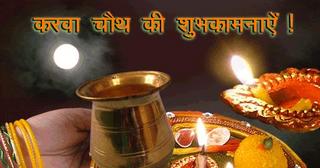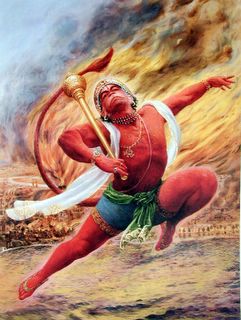This year (2006) Makar-Sankranti is on the 14 in the first half (sudh) of the months of Posh. Last year, it was on the 5. Makar-Sankranti is probably only one festival, which does not follow the vedic calendar, for every year, it falls on January 14th. This is further explained in the "Astrological Significance" section below. However, before you continue reading might I add, its great to be back on such an auspiscious day! :) Enjoy the information below:
Introduction of Makar Sankranti
Makar Sankranti is one of the most auspicious day for the Hindus, and is celebrated in almost all parts of the country in myriad cultural forms, with great devotion, fervor & gaiety. Lakhs of people take a dip in places like Ganga Sagar & Prayag and pray to Lord Sun. It is celebrated with pomp in southern parts of the country as Pongal, and in Punjab is celebrated as Lohri & Maghi. Gujarati's not only look reverentially up to the sun, but also offer thousands of their colorful oblations in the form of beautiful kites all over the skyline. They may be trying to reach upto their glorious God or bring about greater proximity with the one who represents the best. It is a day for which Bhishma Pitamah kept waiting to leave his mortal coil.
Makar Sankranti is the day when the glorious Sun-God of Hindus begins its ascendancy and entry into the Northern Hemisphere. Sun for the Hindus stands for Pratyaksha-Brahman - the manifest God, who symbolizes, the one, non-dual, self-effulgent, glorious divinity blessing one & all tirelessly. Sun is the one who transcends time and also the one who rotates the proverbial Wheel of Time. The famous Gayatri Mantra, which is chanted everyday by every faithful Hindu, is directed to Sun God to bless them with intelligence & wisdom. Sun not only represents God but also stands for an embodiment of knowledge & wisdom. Lord Krishna reveals in Gita that this manifested divinity was his first disciple, and we all know it to be indeed a worthy one too. No Sundays for the Sun, may be because one who revels in its very 'being', the very essence of his own Self, is always in the Sunday mood.
The co-relation of cosmic events with individual life and values is one of the most astounding traits of Hindu Masters. Once this co-relation is brought about thereafter these cosmic events become instrumental to remind us the best which we cherish & value. Of all the cosmic bodies Sun is the most glorious & important, thus every sun-centric cosmic event became very important spiritual, religious & cultural events. On Makar Sankranti day the Sun begins its ascendancy and journey into the Northern Hemisphere, and thus it signifies an event wherein the Gods seem to remind their children that 'Tamaso Ma Jyotir Gamaya'. May you go higher & higher - to more & more Light and never to darkness.
Astrological Significance
Astrological Significance
Makar means Capricorn and Sankranti is transition. There is a sankranti every month when the sun passes from one sign of the zodiac to the next. There are twelve signs of the zodiac, and thus there are twelve sankranti's as well. Each of these sankranti's has its own relative importance but two of these are more important - the Mesh (Aries) Sankranti and the most important, the Makar (Capricorn) Sankranti. Transition of the Sun from Sagittarius to Capricorn, during the winter solstice in the northern hemisphere is known as Makar Sankranti. From this day begins the six-month long Uttarayana, considered very auspicious for attaining higher worlds hereafter. While the traditional Indian Calendar is basically based on lunar positions, but sankranti is a solar event, so while dates of all festivals keep changing, the english calendar date of Makar Sankranti is always same, 14th January. Makar Sankranti is celebrated in the Hindu Calendar month of Magha. There is another significance of this day, after this day the days start becoming longer & warmer, and thus the chill of winter in on decline.
Religious Significance
- The Puranas say that on this day Sun visits the house of his son Shani, who is the swami of Makar Rashi. These father & son do not ordinarily get along nicely, but inspite of any difference between each other Lord Sun makes it a point to meet each other on this day. Father in fact himself comes to his son’s house, for a month. This day symbolized the importance of special relationship of father & son. It is the son who has the responsibility to carry forward his fathers dream and the continuity of the family.
- From Uttarayana starts the ‘day’ of Devatas, while dakshinayana is said to be the ‘night’ of devatas, so most of the auspicious things are done during this time. Uttarayana is also called as Devayana, and the next half is called Pitrayana.
- It was on this day when Lord Vishnu ended the ever increasing terrorism of the Asuras by finishing them off and burying their heads under the Mandar Parvat. So this occasion also represents the end of negativities and beginning of an era of righteous living.
- The great savior of his ancestors, Maharaj Bhagirath, did great Tapasya to bring Gangaji down on the earth for the redemption of 60,000 sons of Maharaj Sagar, who were burnt to ashes at the Kapil Muni Ashram, near the present day Ganga Sagar. It was on this day that Bhagirath finally did tarpan with the Ganges water for his unfortunate ancestors and thereby liberated them from the curse. After visiting the Patala for the redemption of the curse of Bhagirath’s ancestors Gangaji finally merged in the Sagar. Even today a very big Ganga Sagar Mela is organized every year on this day at the confluence of River Ganges and the Bay of Bengal. Lakhs take dip in the water and do tarpan for their ancestors.
We salute such a great devotee & benefactor of his ancestors. One who can express such gratitude to his ancestors, work with tireless resolve to redeem the pride, pledges & resolves of his forefathers, alone possess a personality, which the history reveals to be a true benefactor of the world too. A person who has severed his own roots gets soon rooted out in the flow of time. Moral of the story is to see to it that the roots of the tree of ‘our’ life are not only intact but nourished well, thereafter alone the tree blooms & flourishes.
There is another spiritually symbolic aspect of this story. The 60,000 cursed son of Maharaj Sagar represent our thoughts, who become dull & dead-like because of uncultured & blind ambition. Redemption of such people is only by the waters of Gangaji, brought down ‘to’ & later ‘from’ the Himalayas with great tapasya. This represents dedicated hard work to get the redeeming Brahma-Vidya, which alone enlightens, enthuses & enlivens the life of anyone. - Another well-known reference of this day came when the great grandsire of Mahabharata fame, Bhishma, declared his intent to leave his mortal coil on this day. He had the boon of Ichha-Mrityu from his father, so he kept lying on the bed of arrows till this day and then left his mortal coil on Makar Sankranti day. It is believed that the person, who dies during the period of Uttarayana, becomes free from transmigration. So this day was seen as a sure-shot Good Luck day to start your journey or endeavors to the higher realms beyond.



